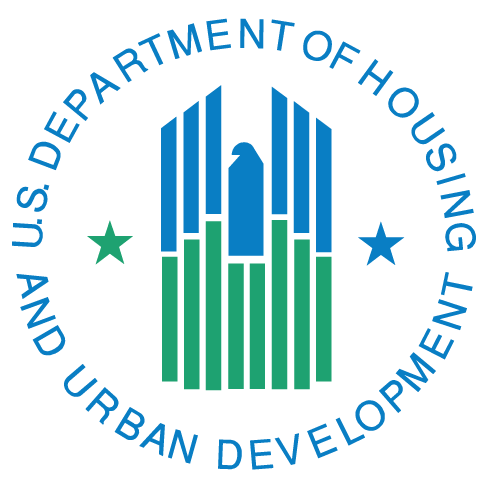RAD Notice Provides Fair Housing and Relocation Guidance
Nov 14, 2016
 HUD issued Notice H 2016-17/PIH 2016-17 providing guidance regarding fair housing and civil rights as well as resident relocation statutory and regulatory requirements when public housing agencies (PHAs) convert public housing to project-based rental assistance under the Rental Assistance Demonstration (RAD). The Notice, which applies only to First Component conversions, became effective on November 10.
HUD issued Notice H 2016-17/PIH 2016-17 providing guidance regarding fair housing and civil rights as well as resident relocation statutory and regulatory requirements when public housing agencies (PHAs) convert public housing to project-based rental assistance under the Rental Assistance Demonstration (RAD). The Notice, which applies only to First Component conversions, became effective on November 10.
RAD is intended to preserve and improve low income housing by enabling PHAs to leverage Section 8 rental assistance contracts to raise private debt and equity for capital improvements. RAD has two components. First Component RAD allows up to 185,000 public housing units to be converted from their existing public housing assistance to project-based Housing Choice Vouchers (PBVs) or to Section 8 project-based rental assistance (PBRA) by September 30, 2018. Second Component RAD allows private properties assisted through the Rent Supplement (Rent Supp), Rental Assistance Program (RAP), and Moderate Rehabilitation programs to convert an unlimited number of Tenant Protection Vouchers (TPVs) to PBRA or PBVs.
The “RAD Notice,” PIH 2012-32 REV-2, issued on June 15, 2015 (see Memo, 6/22/15), updated an earlier RAD Notice. The 2015 Notice established the requirement that specific PHA decisions and activities planned for a First Component RAD conversion be reviewed by HUD prior to implementation – a “front-end” fair housing and civil rights review. The purpose of the front-end review is to help PHAs and project owners meet their fair housing, other civil rights, and relocation obligations by explaining the situations that call for a front-end review, the details of HUD’s review procedures, the type of information that must be submitted, and the timeframes for these reviews.
If a RAD conversion of public housing will require residents to move temporarily or permanently, certain statutory and regulatory resident relocation assistance requirements must be followed. The new Notice reiterates previous requirements and adds new relocation requirements. Notice H 2016-17/PIH 2016-17 replaces and supersedes Notice H 2014-09/PIH 2014-17 (see Memo, 7/18/14).
The new Notice applies to all projects that have applied for RAD First Component conversion that have not yet converted; it does not affect any front-end civil rights approvals provided by HUD prior to November 10. However, with respect to relocation activities, if a PHA has already submitted a Financing Plan that has been accepted for full review after initial screening for completeness, the PHA may request to be governed by the previous Notice H 2014-09/PIH 2014-17.
HUD shared with NLIHC that the fair housing and civil rights provisions of the Notice do not represent significant changes, but are primarily a reminder of pre-existing requirements with an effort to provide greater clarity and transparency.
Some of the key provisions pertaining to fair housing and civil rights listed in the introduction of the Notice include:
- An outline of conditions under which HUD will conduct a front-end review to determine whether the site is in an area of minority concentration relative to the site’s housing market area;
- Guidance on the concepts of “area of minority concentration” and “housing market area” that are reviewed when determining whether a site is in an area of minority concentration;
- Information about what HUD will consider and what PHAs should provide evidence of in order for a proposed site to meet exceptions that permit new construction in an area of minority concentration. This includes:
- An explanation of the presumptions necessary for meeting the sufficient comparable opportunities exception and
- A description of the factors that HUD may consider in evaluating the overriding housing needs exception; and
- An articulation of the issues that HUD will consider in completing the front-end civil rights review for transfers of assistance, including, for example, accessibility and minority concentration.
Regarding relocation provisions, there are a number of new features, several of which are in response to advocates. The Notice requires:
- PHAs or project owners to prepare a written relocation plan for all transactions that involve permanent relocation or temporary relocation anticipated to exceed 12 months;
- PHAs to provide residents with a RAD Information Notice (RIN) before a RAD application is submitted in order to ensure that residents are informed of potential project plans and of their rights in connection with RAD;
- Project owners to provide a notification of Return to the Covered Project, (residents have a right to return to the converted property);
- PHAs to maintain detailed data regarding each household that will be relocated, with key dates of notices and moves.
In addition, the relocation section of the Notice:
- Provides enhanced guidance on the right to return requirements, any offers of alternative housing options, and the documentation that must be retained when tenants choose an alternative housing option and decline their right to return; and
- Describes how HUD has administratively implemented the Uniform Relocation Act (URA) requirements and the URA relocation assistance and payments for displaced residents who decline the right to return and instead choose voluntary permanent relocation.
There are many more relocation provisions in the Notice. NLIHC will share further analysis in a future Memo to Members.
HUD seeks comments from the public regarding the clarity and organization of the Notice. Any comments should be submitted to [email protected] within 30 days of the issuance of the Notice.
Notice H 2016-17/PIH 2016-17 is at: http://bit.ly/2fEfXcB
More information about RAD is on page 4-13 of NLIHC’s 2016 Advocates’ Guide at: http://bit.ly/22QZiEm